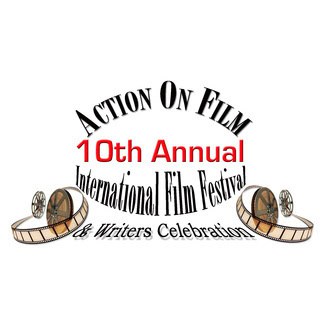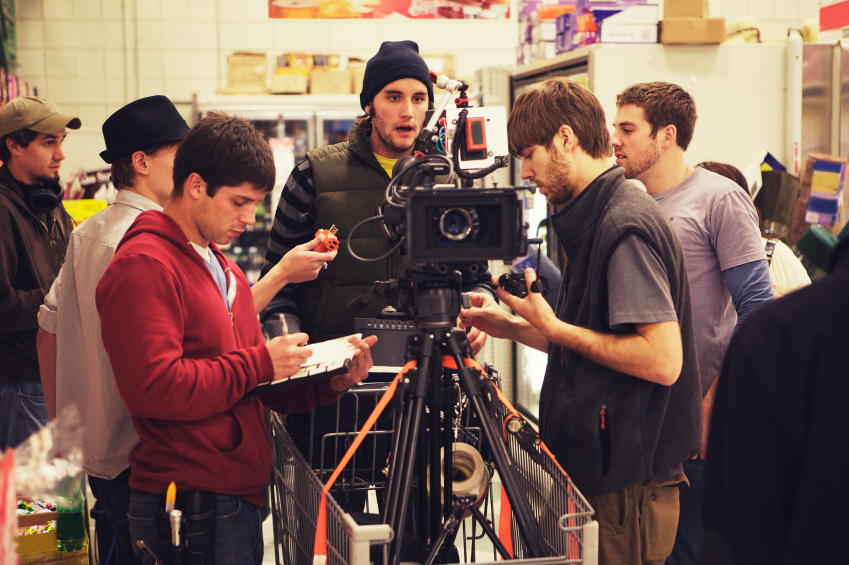A Voice with Legs: Laura Carruthers Translates Dance into Film
Laura Carruthers is a six-time national champion and world-ranked Scottish Highland dancer, a former member of the Ballet Arizona, and an award-winning filmmaker whose portrayals of dance on screen welcome mainstream audiences to its intricacies. Her latest film, Grace Fury, is an autobiographical exploration into the joy of creating art that has just been nominated for multiple awards at the Glendale International Film Festival, the San Francisco International New Concept Film Festival, the LA Underground Film Forum, and the World Music and Independent Film Festival. Fascinated by the journey that would take a young Los Angeles native from Celtic dance enthusiast to successful filmmaker, I chatted with Laura about what it’s taken her to get here, the inspirations and challenges that she found along the way, and the sense that “bonding with art isn’t always immediate escapism.”
Born and raised in Los Angeles, CA--Burbank, to be exact--Laura spent childhood summers watching her father compete in traditional Scottish sport, a subculture she describes as larger than life. “Not your traditional vacation,” Laura noted laughing, but one that quickly inspired her to enroll in Scottish Highland dancing herself. And she was good at it--really good: she went on to win six national championships. Things took a turn when Laura enrolled at Arizona State University to study history, but there she kept her passion for dance alive by studying ballet under former Kirov principal Zenia Chlistowa, and following graduation she was accepted into the prestigious Ballet Arizona by Director Michael Uthoff.
At this point during our conversation, we paused a moment for me to ask the question that she says nearly everyone who’s not in her worlds asks: what exactly is Scottish Highland dancing, and is it anything like ballet? The answer: Scottish Highland dancing is very aerobic and demanding, requiring a simultaneous precision and buoyancy that results in what Laura describes as a “state of perpetual spring” (which as you might expect, is “very horrible on your legs”). Far from the synchronized pounding of its more mainstream Celtic sibling made popular with Riverdance, Highland dancing is relentless but never heavy. Ballet in turn depends on the same level of precision, but is, perhaps surprisingly so, less rigid than Highland dancing--a flexibility that Laura found very liberating and appealing.
Of course, one must acknowledge that Laura is blessed with preternatural energy and grace--born to a mathematician mother and a father who loved Scottish sport but not dance, Laura is the first of her family to become a dancer. And yet nearly everyone who has crossed her path can’t help but notice a natural exuberance and magnetism that translate across Celtic, classical, and contemporary techniques.
So, Laura made it to ASU where she discovered that the Scottish subculture of her Californian youth was minimal at best. She found herself living almost a double life: the side focused on that subculture, and the side in which her peers had zero connection to it or understanding about it; as Laura describes the dichotomy, “you’re either in it, or you don’t know much about it.” Despite pressure from her father to focus on academics and graduate, Laura discovered that ballet was a way to bridge the gap between Highland dancing and the mainstream professional dance world--and perhaps even a way to turn the dance realm into a long-term career.
Laura started introducing her fellow ballet dancers to the “strange little technique” of Highland dancing, and as a burgeoning choreographer she blended the Celtic with the classical. People took notice, and it was at this point that she started her transformation into the “voice with legs.”
Fast forward to today: Laura is still dancing, but is now also a successful filmmaker and a self-described sociopolitical activist. Her overarching artistic philosophy is intrinsically bound to her unshakeable insistence that art have a place in today’s increasingly money-focused and conformist culture: “I fear that in some ways we’re losing the innocence of just being artistic, allowing for a degree of freedom and room to do just what you need to do and say what you need to say...I feel like art, like science, is a space where we should be pioneering, and in many cases you don’t even know what contributions you might make--a way that might not seem huge in the moment but might influence people down the road. Even if it’s not entirely practical or doesn’t have a huge payoff, in some cases that’s the real stuff, the parts of the variation in our species that goes missing because we follow the same lines too often.”
It is impossible not to be inspired by the conviction with which Laura shares that vision for a world in which creativity continues not simply to exist but to thrive, and it makes it easy to understand why her latest film Grace Fury is picking up nominations across the festival circuit.
An autobiographical foray into Laura’s life and the necessity of artistic creation, Grace Fury combines her obvious long-time love of film (Kubrick and Coppola are some of her biggest influences) with a lifetime’s understanding of dance and self that’s challenged only by the technical innovation that five Panasonic VariCams offer insofar as true viewer immersion. The film is a beautifully intimate experience with a degree of “poetic mystery” that is all too often hard to capture, but it also speaks to the greater human experience. Laura notes, “I hope that some of the points I’m making, the questions I’m asking, are bigger and more core; I’m saying this little microexperience, this one person’s tiny shot at life that I have, that maybe there are some things I’m saying that might resonate with other people, that might speak to human nature.”
Grace Fury originally started as a festival opportunity offered to her by a couple producers in New York; when the larger project died, Laura decided to keep going with the film, realizing that maybe it was time to say what she really meant. If that’s not a metaphor for Laura’s entire drive in life, I don’t know what is. I asked Laura what she looks to get out of this film and the work she does now.
“I just hope the whole thing inspires people to do their own thing as well. To maybe be on the lookout for different kinds of artists who aren’t always in your view all the time. It’s important to inspire people in whatever capacity you have to make art. We should all have the experience of making art, and never resign ourselves to just being spectators or saying we can’t. It’s part of the human experience.”
Check out Laura's work and upcoming film Grace Fury at http://www.lauracarruthers.com.


